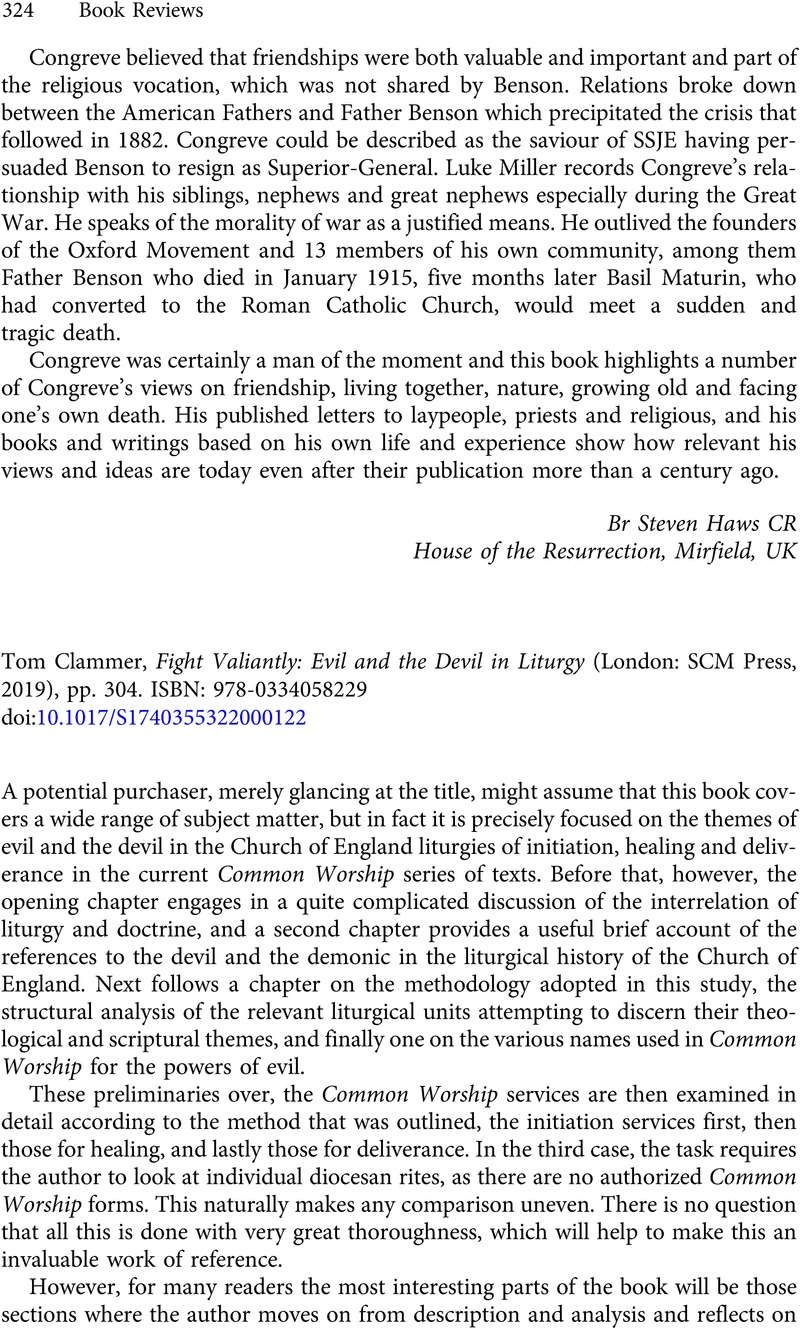No CrossRef data available.
Article contents
Tom Clammer, Fight Valiantly: Evil and the Devil in Liturgy (London: SCM Press, 2019), pp. 304. ISBN: 978-0334058229
Review products
Tom Clammer, Fight Valiantly: Evil and the Devil in Liturgy (London: SCM Press, 2019), pp. 304. ISBN: 978-0334058229
Published online by Cambridge University Press: 12 May 2022
Abstract
An abstract is not available for this content so a preview has been provided. Please use the Get access link above for information on how to access this content.

- Type
- Book Review
- Information
- Copyright
- © The Author(s), 2022. Published by Cambridge University Press on behalf of The Journal of Anglican Studies Trust



